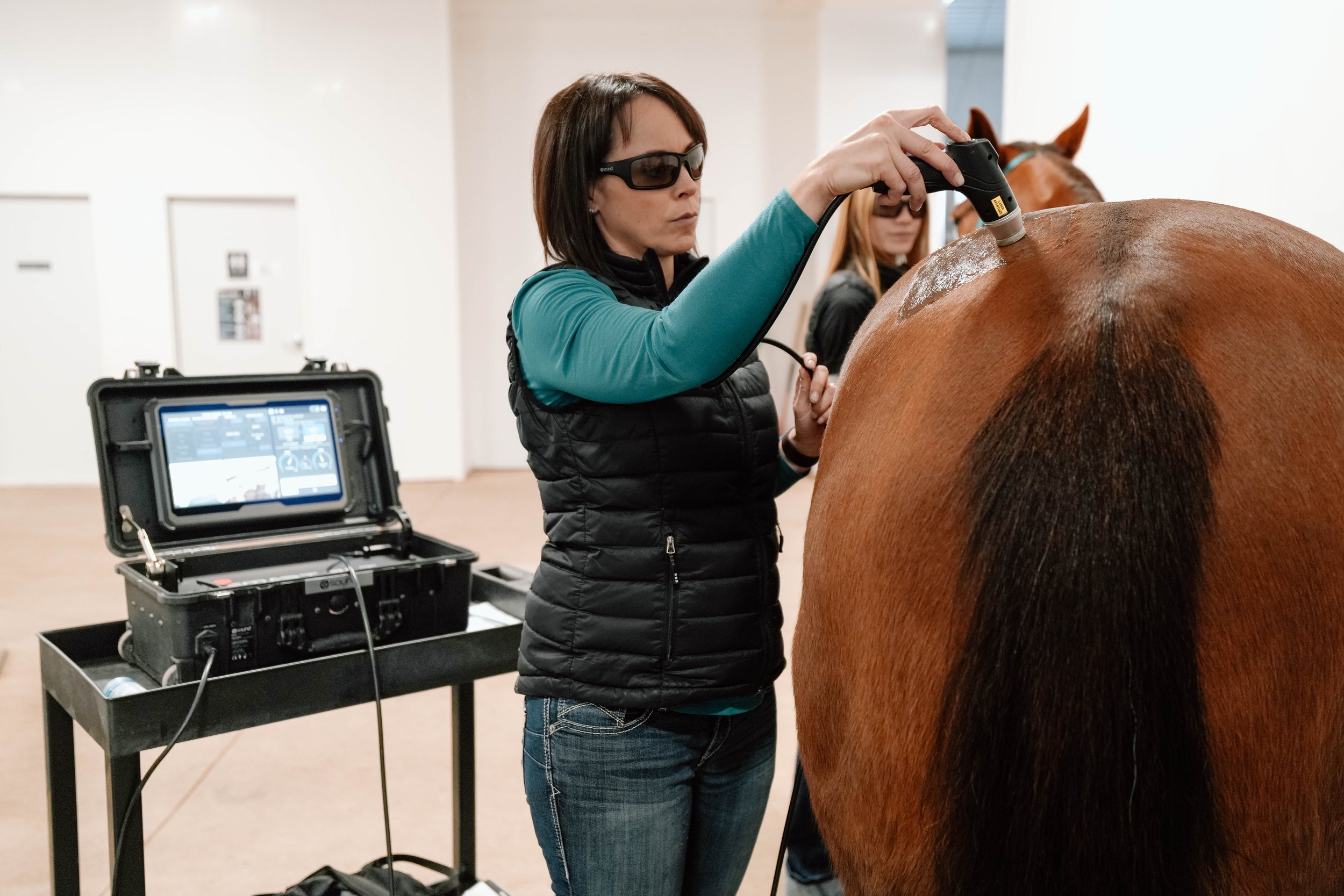Equine Therapy for Kid: Psychological and Behavior Assistance Described
Equine Therapy for Kid: Psychological and Behavior Assistance Described
Blog Article
Assessing the Performance of Laser Therapy in Horse Treatment for Injury Rehab
The evaluation of laser treatment's performance in equine injury rehab rests on several variables, including healing time, discomfort mitigation, and cells regrowth. Medical researches recommend noteworthy improvements in conditions like tendonitis and osteoarthritis, attributed to boosted cellular function and raised ATP manufacturing. Veterinarians frequently observe remarkable end results with laser therapy compared to traditional approaches, placing it as an important component in equine care. However, the requirement for continual surveillance and customized treatment plans can not be overemphasized. What details professional evidence supports these claims, and how do veterinarians carry out these methods in technique?
Comprehending Laser Therapy
Laser therapy has actually come to be a crucial device in veterinary medicine, particularly in the therapy of equine problems. Recognized for its non-invasive nature and efficiency, laser treatment includes the application of particular wavelengths of light to stimulate cells repair service and minimize inflammation. This healing method is progressively favored for its capability to accelerate the recovery process in horses dealing with a selection of bone and joint injuries and chronic problems.
The primary device behind laser treatment is its ability to boost cellular features. When laser light penetrates the skin, it is taken in by mitochondria, the giant of cells, which causes increased production of adenosine triphosphate (ATP) This biochemical power boost promotes mobile repair work and regeneration. In addition, laser treatment promotes vasodilation, boosting blood flow and oxygen shipment to broken tissues, hence quickening healing.
In equine medicine, laser treatment is specifically advantageous for conditions such as tendonitis, osteo arthritis, and injury recovery. The strategy is lauded for its pain-relieving homes, permitting steeds to regain movement and function a lot more swiftly. Vets additionally appreciate its minimal side impacts contrasted to various other therapy methods, making it a dependable and risk-free choice for equine treatment.

Just How Laser Treatment Functions

Upon absorption, these photons set off a series of biochemical modifications, improving mitochondrial function and bring about raised adenosine triphosphate (ATP) manufacturing. This rise in ATP accelerates mobile metabolic process, promoting cells repair service and regeneration. Additionally, laser treatment regulates inflammatory actions by impacting cytokine levels and lowering oxidative anxiety, thus alleviating discomfort and swelling.
One more significant element of laser therapy is its duty in improving microcirculation. The therapy promotes vasodilation, improving blood circulation and oxygen distribution to broken cells (Equine Therapy). This promotes the removal of cellular debris and supports the proliferation of fibroblasts and collagen synthesis, crucial for injury healing
Medical Evidence
The effectiveness of laser therapy in equine therapy has actually been confirmed via numerous professional research studies, showcasing its healing prospective throughout a variety of conditions. A study carried out by Turner et al. (2012) showed that horses treated with low-level laser treatment (LLLT) for tendon injuries showed increased healing contrasted to those getting standard therapies.
In a similar way, study by Johnson and coworkers (2015) concentrated on equine muscular tissue injuries, disclosing that laser treatment dramatically quickened muscular tissue pop over here fiber regrowth and minimized muscle mass tightness. These findings were proven by histological analyses showing improved muscle mass cells company. In addition, professional analyses have shown that laser treatment can relieve persistent conditions such as osteoarthritis. A research by Smith et al. (2018) reported that equines with osteoarthritic joints experienced noteworthy pain alleviation and boosted range go now of activity complying with a regimen of laser treatment sessions.
Veterinarian Insights

Vets likewise value the convenience of laser treatment. She directs out that laser therapy can be tailored to the specific demands of each steed, making sure ideal results.
Furthermore, veterinarians value the capacity to incorporate laser therapy with various other treatment techniques. This multimodal method can improve general therapy efficacy, supplying a thorough option for equine rehabilitation. Such endorsements from skilled specialists highlight the expanding approval and application of laser therapy in equine medication.
Practical Factors To Consider
An essential aspect of carrying out laser therapy in equine therapy includes understanding the sensible Clicking Here factors to consider that ensure its efficiency and security. Most importantly, it is essential to pick the ideal laser device, as numerous types vary in wavelength, power, and penetration deepness. Equine Therapy. Veterinarians must be skilled in these parameters to tailor therapy protocols properly to each injury kind
Moreover, the regularity and period of laser therapy sessions require cautious preparation to make best use of healing benefits while lessening any kind of potential negative results. Consistent tracking of the steed's reaction to therapy can lead necessary modifications in the therapy program. Developing a safe and controlled atmosphere throughout therapies is also important to protect against unintentional exposure to laser exhausts, which can harm both the equine and the handler.
Training and accreditation of employees carrying out laser therapy are critical to guarantee appropriate strategy and to promote safety and security standards. Additionally, maintaining precise records of each session, including laser settings and observed results, is essential for reviewing the total performance of the therapy and for making data-driven choices.
Verdict
Laser treatment has arised as a reliable modality in equine injury recovery, using substantial advantages in healing time, pain alleviation, and tissue recovery. For ideal outcomes, constant monitoring and customized treatment methods stay essential in leveraging the full capacity of laser therapy in equine care.
Report this page